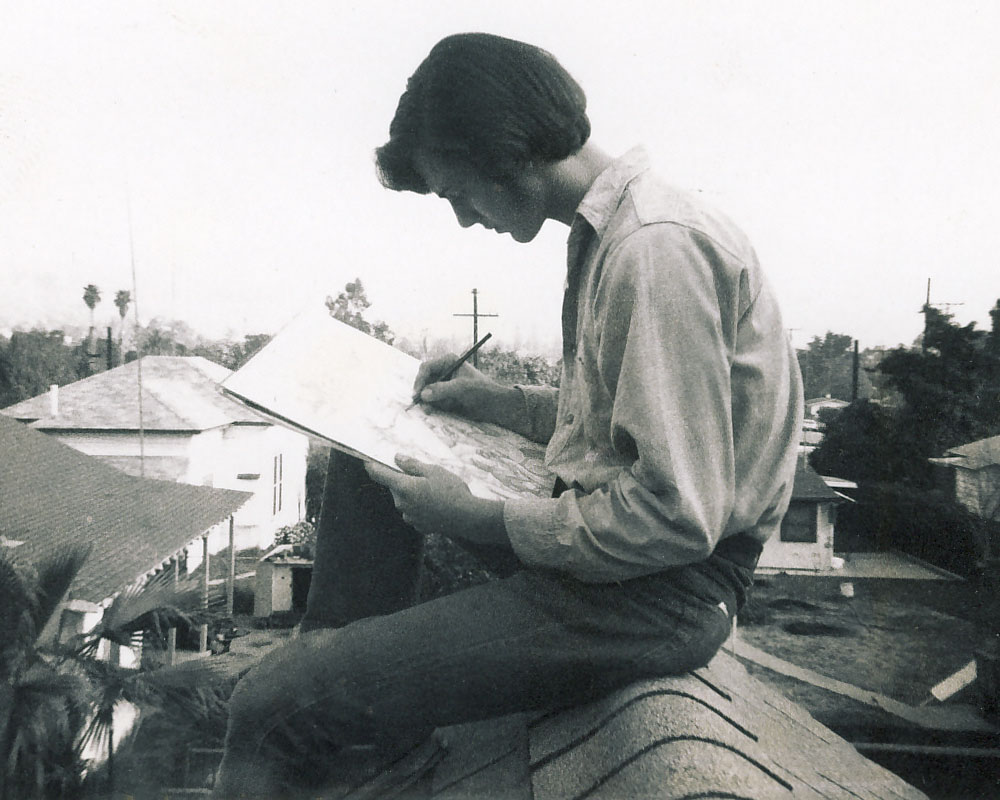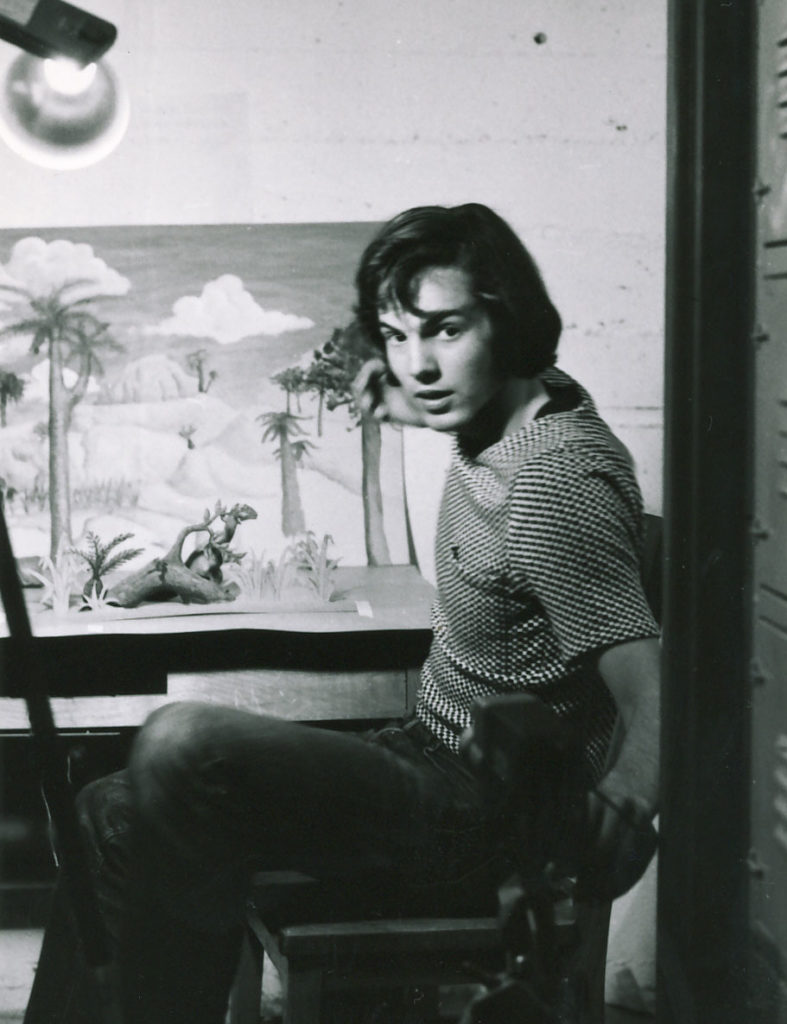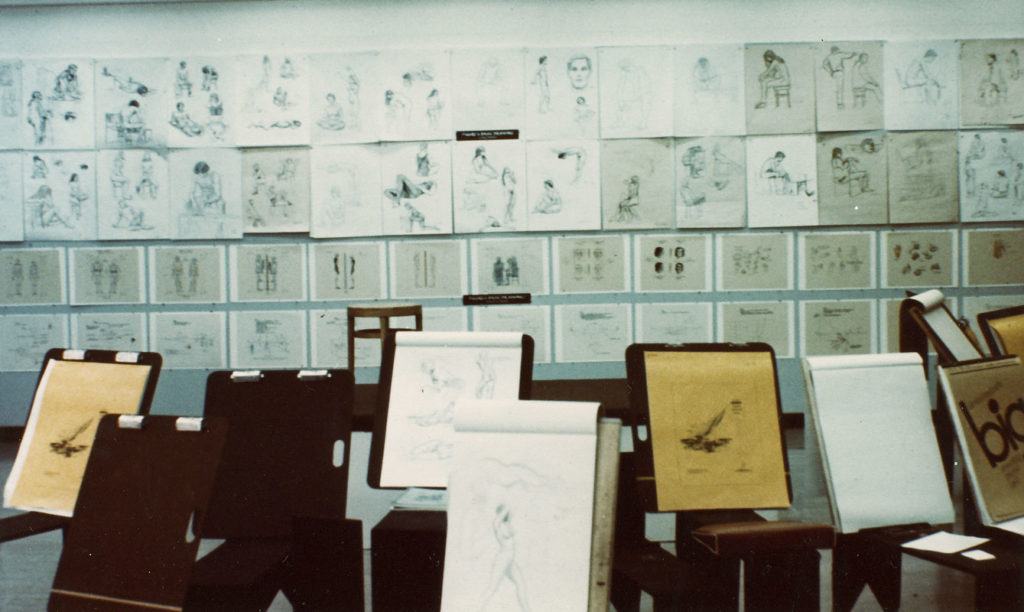
“There’s a man on the phone,” my mother told me. “He says he’s from Walt Disney.”
Under normal circumstances, I would have dismissed this as a practical joke perpetrated by one of my friends, all of whom knew that my lifelong ambition was to work for a film studio. However, recent events had not been normal, and there was the possibility that the man on the phone was legit.

In the Fall of 1974, I was a senior at Santa Barbara High School. A few months before the phone call, I was one of a handful of students invited to an Art Teachers convention at the Disneyland Hotel in Anaheim, California. After listening to a lecture on theme park design, I introduced myself to the speaker, a man named John Hench, Vice President of WED Enterprises. I told him that my friends and I made films, and I persuaded him that we should get a tour of his company.
Fast forward a few weeks.
The principal members of Paragon Productions (there were four of us who had filed a DBA the year before and would disband after we graduated High School) were at WED Enterprises. WED was short for Walter Elias Disney. The company has since changed its name to Disney Imagineering, but it was then and is now the division that develops the theme parks.
Within their facility on Flower Street in Glendale awaited wonders uncountable. Artisans in the Model Shop crafted detailed miniatures of Disneyland attractions. Shelves in the Sculpture Department held life-like figurines and full-size heads of presidents and pirates that looked as if they had been moving the moment before you glanced at them and would move again the moment you to turned away. Peeking into the Show Designers’ offices, you saw elaborate sketches and full-color paintings of future projects. All of these were delights to the senses of four teenagers from Santa Barbara.
“We brought some of our 8mm films with us,” I mentioned to John Hence’s assistant after the tour. “Would you like to see them?”
“I’d love to,” said the assistant who had already given us an hour and a half of his day. “But we don’t have an 8mm projector.” It was a polite sidestep. Too bad it did not work.
“We brought a projector with us,” I cheerfully replied.
“How come you showed your films to WED, and you didn’t show them to us in Feature Animation?”
We are back to the beginning of the story. The man on the phone had just introduced himself as Ed Hansen, Head of Personnel for Animation at Walt Disney Pictures. I did not know him at the time, so I was unfamiliar with Ed’s sometimes misplaced sense of humor. I remember little of that conversation, but what mattered was that someone from a major motion picture studio knew who I was and wanted to see my work. We made arrangements for me to return along with my cohorts Keith, Jeff, and Bruce.

The films we made together lacked budget and polish, but they had ambition and imaginative storytelling. Some featured stop-motion animation. They got us through the front door at Disney. What we did not know was that Disney had a mandate to find new talent. When Walt built Disneyland, his interest in animation diminished, and after his death, the feature film department plodded along as older employees trickled away. But the films continued to make money, and the merchandising was always lucrative. Some executives realized that keeping this particular cash cow alive meant replenishing the workforce. To that end, they instigated a new Character Animation program at the California Institute of the Arts. They had teachers. They had funding. They needed students.
I did not aspire to be an animator, but I wanted to work at a film studio, so when Ed Hansen talked about opportunities at Disney, I listened. He invited the four of us to submit portfolios. Bruce and I did. Keith and Jeff had plans to study filmmaking at San Francisco State, but Jeff eventually followed us to Cal Arts three years later.
Things were happening fast.
Bruce had submitted his portfolio before me and got accepted first. I was still debating the merits of Cal Arts when Jack Hannah called me. Jack, a veteran Disney animator, was the new dean of the program. “Yours wasn’t the best portfolio we received, but –” here he paused for dramatic effect. “It was pretty high up there, so we’re giving you a full scholarship.”
And just like that, I was going to college.

Our first-year class in the Character Animation Program was a small but extraordinary group of people. Vanity Fair did an article about us in their 2014 March issue. I have been an animator, sculptor, illustrator, storyboard artist, screenwriter, TV and feature film director, and producer. Yet, compared with many of my classmates, I am an underachiever. Some of my fellow students were Brad Bird, John Lasseter, John Musker, and Tim Burton. By dint of our creative ambitions, all of us had done something to get noticed by Disney. Since the Character Animation Program did not exist before we got there, we had not gone looking for it. None of us knew if Cal Arts would lead to a career in the entertainment industry. Disney’s best days seemed to be behind it, and there were few other studios where an animator could earn a living. Still, we motivated each other with our aspirations and dreamed in CinemaScope.

In the first year, all of our classes took place in a windowless basement room. Its alphanumeric designation was A-113. Animation fans may be familiar with that combination of letters and numbers because A-113 now appears in many Disney and Pixar animated films. Would it be immortalized in this manner if that room had been more agreeable, maybe had a single window or better ventilation? I wonder.
In 1975 “A Chorus Line” opened on Broadway, “Jaws” became the first blockbuster movie, and Gerald Ford was about to leave the Whitehouse in a peaceful transfer of power to Jimmy Carter. We did our class assignments, listened to Elton John, and watched Saturday Night Live. We started the academic year with twenty-five students and ended with less than twenty.

Cal Arts consisted of five schools: Film, Theater, Music, Dance, and Art. Character Animation was a part of the Film School, even though most of our classes involved drawing. We were encouraged to interact with the other schools, but we rarely did. The first student I met from the Art School told me that our program did not belong at Cal Arts. “This is a fine art college,” he insisted. “Animation the way you’re learning it is a Craft and not an Art.”
The second-year at Cal Arts was better. There were more of us in Character Animation, and we upgraded to classrooms with windows. We also got some new teachers, T Hee for Caricature and Ken O’Connor for Layout and Perspective. Ken became my favorite instructor. He taught us how to create worlds and place our characters believably into them. Each academic year culminated in a review ceremony attended by personnel from Disney. They came to encourage and evaluate us. After the second-year review, my former roommate Brad Bird came to find me. “Jack Hannah wants you, me, John Musker, and Jerry Rees in his office,” he told me.
“Why?” I asked. “Are we in trouble?”
“I think they’re going to offer us jobs at Disney,” he said.
“You’re crazy,” I told Brad. “They might offer jobs to John and Jerry, but they’re not going to give jobs to you and me.”
But Brad was right. I was wrong.
It was now 1977. “Star Wars” was about to change everything in Hollywood when John, Jerry, Brad, and I became the first students from the Character Animation program hired at Walt Disney Pictures. I was twenty years old, and I had achieved my life’s ambition to work for a film studio. I knew that I would have to retool my goals, I did not want to be an animator for the rest of my career, but that was a problem for the future.
For the moment, I was pretty damned pleased with myself.

I really enjoyed this, Doug!!! Looking forward to hearing more!!
Thanks, Ron. This all happened a long time ago, in a land far, far away.
Great story, Doug! I’d love to hear more of your story. 🙂
It’s great to hear from you, Darcy. I will try to write more posts like this one.
An amazing, inspiring, continuous journey.
While you were on your road to Disney, I met your dad! My dad and I were doing remodel work in the Santa Barbara area and we went to nice home in the San Roakie hills. The owner came out to talk to us and looked at me and said he had a son about my age, and ask if I knew you! He was pleased to hear that we were good friends! He was very proud of you Doug! And I am very glad to be your friend!
Ahh – thanks, Steve! I’m delighted that we’re still in contact after all of these years and glad to say that my dad is still going strong.
That’s remarkable that you’re dad is still going strong! Really a blessing! My dad passed away in 2011 at 81.